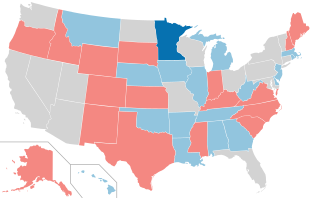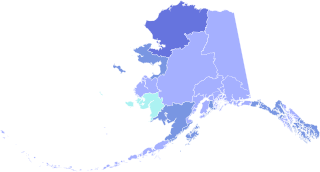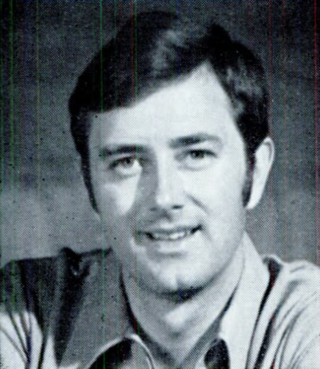
The 1990 United States Senate elections were held on Tuesday, November 6, 1990, with the 33 seats of Class 2 contested in regular elections. Special elections were also held to fill vacancies. The Democratic Party increased its majority with a net gain of one seat from the Republican Party. The election took place in the middle of President George H. W. Bush's term, and, as with most other midterm elections, the party not holding the presidency gained seats in Congress.

The 1984 United States Senate elections were held on November 6, with the 33 seats of Class 2 contested in regular elections. They coincided with the landslide re-election of President Ronald Reagan in the presidential election. In spite of the lopsided presidential race, Reagan's Republican Party suffered a net loss of two Senate seats to the Democrats, although it retained control of the Senate with a reduced 53-47 majority. Democrats defeated incumbents in Illinois and Iowa, and won an open seat in Tennessee, while Republicans defeated an incumbent in Kentucky.

The 1978 United States Senate elections were held on November 7, in the middle of Democratic President Jimmy Carter's term. The 33 seats of Class 2 were contested in regular elections. Special elections were also held to fill vacancies. Thirteen seats changed hands between parties, resulting in a net gain of three seats for the Republicans. Democrats nevertheless retained a 58–41 majority.

The 1972 United States Senate elections were held on November 7, with the 33 seats of Class 2 contested in regular elections. They coincided with the landslide re-election of Republican President Richard Nixon. Despite Nixon's landslide victory, Democrats increased their majority by two seats. The Democrats picked up open seats in Kentucky and South Dakota, and defeated four incumbent senators: Gordon Allott of Colorado, J. Caleb Boggs of Delaware, Jack Miller of Iowa, and Margaret Chase Smith of Maine. The Republicans picked up open seats in New Mexico, North Carolina, and Oklahoma, and defeated one incumbent, William B. Spong Jr. of Virginia.

The 1970 United States Senate elections was an election for the United States Senate. It took place on November 3, with the 33 seats of Class 1 contested in regular elections. Special elections were also held to fill vacancies. These races occurred in the middle of Richard Nixon's first term as president. The Democrats lost a net of three seats, while the Republicans and the Conservative Party of New York picked up one net seat each, and former Democrat Harry F. Byrd Jr. was re-elected as an independent.

The 1968 United States Senate elections were elections for the United States Senate. Held on November 5, the 34 seats of Class 3 were contested in regular elections. They coincided with the presidential election of the same year. The Republicans picked up five net seats in the Senate. This saw Republicans win a Senate seat in Florida for the first time since Reconstruction.

The 1958 United States Senate elections were elections for the United States Senate which occurred in the middle of President Dwight D. Eisenhower's second term. Thirty-two seats of Class 1 were contested in regular elections, the new state of Alaska held its first Senate elections for its Class 2 and 3 seats, and two special elections were held to fill vacancies.

The 1930 United States Senate elections occurred in the middle of Republican President Herbert Hoover's term. The 32 seats of Class 2 were contested in regular elections, and special elections were held to fill vacancies. With the Great Depression beginning to take hold, Republican incumbents became unpopular, and Democrats picked up a net of eight seats, erasing the Republican gains from the previous election cycle. Republicans retained control of the U.S. Senate since Vice President Charles Curtis cast the tie-breaking vote. This was the first of four consecutive Senate elections during the Depression in which Democrats made enormous gains, achieving a cumulative pick-up of 34 seats.

The 1978 United States Senate election in Delaware was held on November 7, 1978. Incumbent Democratic United States Senator Joe Biden won re-election to a second term, defeating Republican challenger James H. Baxter Jr in a landslide victory. This is the first of five elections that Biden won all counties.

The 1974 United States Senate election in Alaska took place on November 5, 1974. Incumbent Democratic U.S. Senator Mike Gravel was re-elected to a second term in office, defeating Republican State Senator Clyde "C.R." Lewis. This is the last time the Democrats or a person not named Murkowski have won the Class 3 Senate seat in Alaska.

The 1968 United States Senate election in Alaska took place on November 5, 1968. Incumbent Democratic U.S. Senator Ernest Gruening ran for a second full term in office but finished behind Speaker of the Alaska House of Representatives Mike Gravel in the Democratic primary. Gruening launched a write-in bid for the seat in the general election, but finished third to Gravel and Republican former Anchorage mayor Elmer Rasmuson.

The 1962 United States Senate election in Alaska took place on November 6, 1962. Incumbent Democratic U.S. Senator Ernest Gruening ran for a second term in office and defeated Republican nominee, Anchorage lawyer, former Interior Solicitor & former U.S. Attorney Ted Stevens.

The 1972 United States Senate election in Alaska was held on November 7, 1972. Republican U.S. Senator Ted Stevens, who was first appointed & elected to complete the unexpired term of Bob Bartlett was re-elected to his second term in office, over Democrat Gene Guess.

The 1966 United States Senate election in Alaska was held on November 8, 1966. Incumbent Democratic U.S. Senator Bob Bartlett was re-elected to a third term in office in a landslide, defeating Republican dentist Lee McKinley in a rematch of their 1960 race. Bartlett would not complete the term, dying in office on December 11, 1968, following complications after heart surgery. Ted Stevens would be elected to succeed Bartlett, and would serve for 40 years in the U.S. Senate. This was the last time until 2008 that a Democrat was elected to Alaska's Class 2 Senate seat.

The 1958 United States Senate elections in Alaska were held November 25, 1958. The elections were held in anticipation of Alaska's admission as the forty-ninth State in the union, effective January 3, 1959. The state held two simultaneous elections to determine their first senators.

The 1940 United States Senate election in Texas was held on November 5, 1940. Incumbent Democratic U.S. Senator Tom Connally was re-elected to his third term in office, with only minor opposition in the Democratic primary and general elections.

The 1946 United States Senate election in Texas was held on November 5, 1946. Incumbent Democratic U.S. Senator Tom Connally was re-elected to his fourth term in office, with only minor opposition in the Democratic primary and general elections.

The 1966 United States Senate election in Iowa took place on November 8, 1966. Incumbent Republican Senator Jack Miller was re-elected to a second term in office over Democrat E.B. Smith.

The 1978 United States Senate election in Kentucky took place on November 7, 1978. Incumbent U.S. Senator Walter Dee Huddleston was re-elected to a second term. As of 2023, this was the last time Democrats or anyone other than Mitch McConnell won the Class 2 Senate seat in Kentucky.

The 1978 United States Senate election in South Dakota was held on November 7, 1978. Incumbent Democratic U.S. Senator James Abourezk did not run for re-election to a second term, but was succeeded by his political rival, Republican U.S. Representative Larry Pressler.























